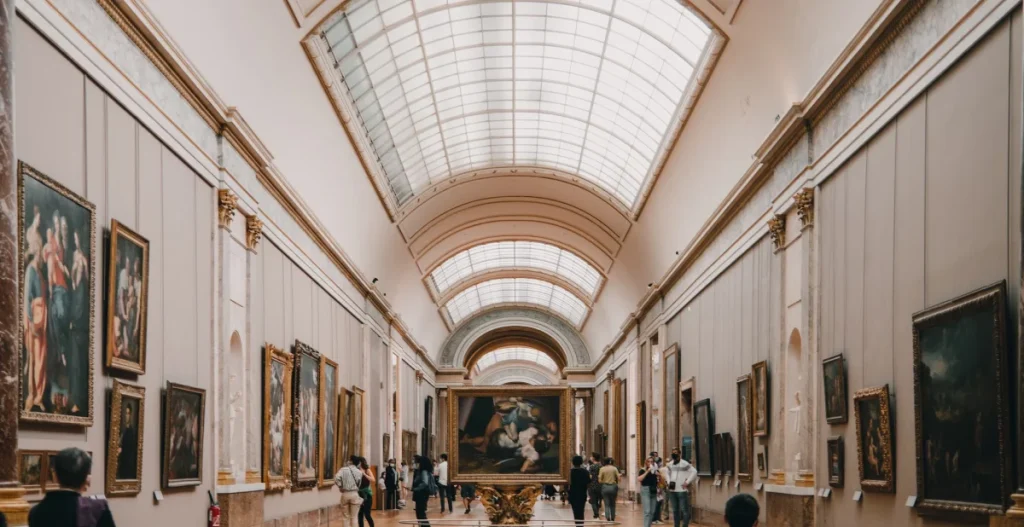
Paris, often referred to as the “City of Light,” is a beacon of culture, a city where art, architecture, and cinema intertwine to create a unique and captivating tapestry. From its iconic landmarks like the Louvre and the Eiffel Tower to its charming Montmartre district and the cinematic magic of the French New Wave, Paris has played a central role in shaping and reflecting global artistic and cultural trends. This article explores the rich and diverse world of art, architecture, and cinema in Paris, celebrating the city’s enduring legacy in each of these domains.
Art in Paris: The Louvre and Beyond
The Louvre, a former royal palace turned world-renowned museum, is synonymous with art appreciation in Paris. Housing thousands of works of art, including the enigmatic Mona Lisa and the elegant Venus de Milo, the Louvre is an art lover’s paradise. The museum’s architecture, a blend of medieval fortress and Renaissance palace, is a work of art in itself. Its glass pyramid entrance, designed by I. M. Pei, stands as a symbol of modernity while preserving the historical charm of the institution.
Beyond the Louvre, Paris boasts a plethora of art galleries, from the Musée d’Orsay, known for its impressionist masterpieces, to the Centre Pompidou, a striking contemporary building housing a vast collection of modern and contemporary art. The Musée de l’Orangerie, home to Claude Monet’s magnificent Water Lilies, is an oasis of tranquility in the heart of the city. Paris’s art scene extends beyond museums, with countless galleries and studios scattered throughout the city, fostering creativity and expression.
Parisian Architecture: From Gothic Grandeur to Modern Marvels
Paris is a living architectural museum, displaying a rich tapestry of styles across the centuries. The city’s iconic structures offer a journey through time and architectural evolution.
- Gothic Grandeur: The Cathedral of Notre-Dame, with its intricate flying buttresses and breathtaking rose windows, exemplifies the finest of Gothic architecture. Although severely damaged by fire in 2019, its ongoing restoration is a testament to the city’s commitment to preserving its architectural heritage. Nearby, the Sainte-Chapelle, known for its stunning stained glass, and the Conciergerie, a former royal palace turned prison, are architectural gems.
- Haussmann’s Transformation: In the 19th century, Napoleon III commissioned Baron Haussmann to transform the city. This led to the creation of broad boulevards like the Champs-Élysées and the stunning Palais Garnier, an opera house resplendent with opulent ornamentation.
- Art Nouveau and Art Deco: The Belle Époque period saw the emergence of Art Nouveau and Art Deco movements. The entrance of the Metro, designed by Hector Guimard, remains an iconic example of Art Nouveau. The sleek, geometric lines of Art Deco are celebrated in landmarks like the Théâtre des Champs-Élysées.
- Modern Masterpieces: Paris is home to striking modern architectural marvels. The glass and steel structures of La Défense, a business district housing the Grande Arche, and the Fondation Louis Vuitton, a cultural center designed by Frank Gehry, showcase the city’s contemporary architectural prowess.
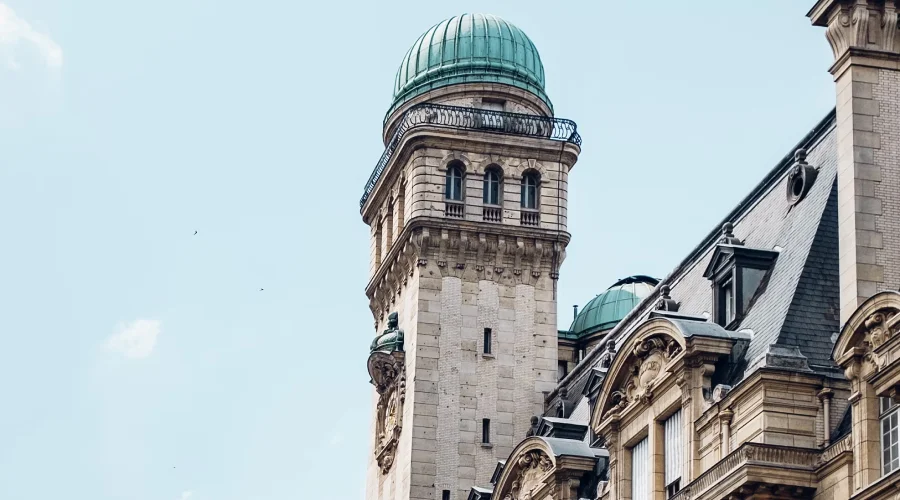
Cinema in Paris: A Love Affair with the Silver Screen
Paris has a long and storied relationship with cinema. The Lumière brothers, pioneers in early cinema, conducted their first public screening of films in Paris in 1895. The city’s love affair with cinema continues to this day.
Paris holds a special place in the history of film. The French New Wave, characterized by its unconventional storytelling and use of natural light, emerged in the late 1950s and early 1960s. Filmmakers like François Truffaut, Jean-Luc Godard, and Agnès Varda reshaped cinema with groundbreaking works such as “The 400 Blows” and “Breathless.” Many of these iconic films were shot on the streets of Paris, making the city an integral character in the narratives.
Founded by Henri Langlois, the Cinémathèque Française is a treasure trove of cinematic history. It houses an extensive collection of films and memorabilia, offering visitors a deep dive into the world of cinema. The institution also regularly hosts retrospectives and screenings of classic and contemporary films.
Paris is not just a backdrop for films but also a setting for numerous iconic scenes. The steps of Montmartre, featured in “Amélie,” remain a tourist attraction, and the Seine’s riverbanks offer picturesque views featured in countless cinematic moments.
The city hosts numerous film festivals, including the prestigious Cannes Film Festival. Additionally, local festivals like the Paris International Film Festival celebrate independent and international cinema.
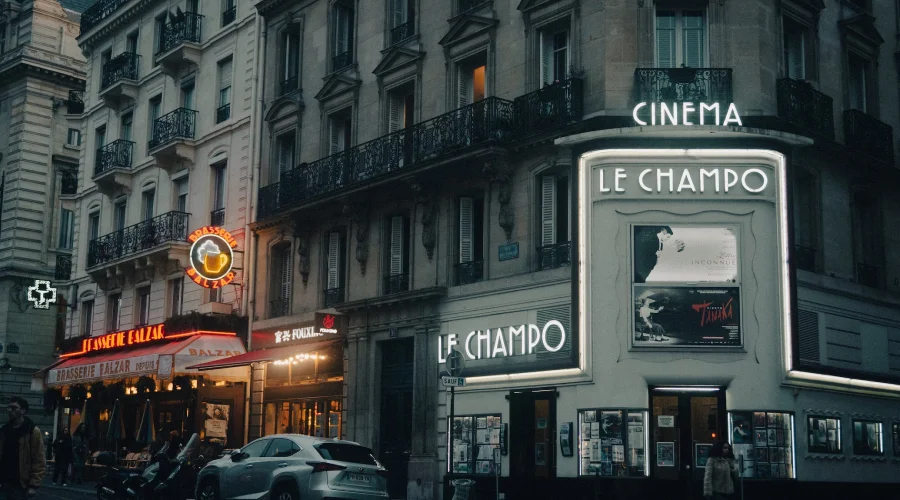
The Montmartre Artistic Enclave
Nestled atop a picturesque hill in the northern part of Paris, the Montmartre Artistic Enclave stands as a testament to creativity, rebellion, and artistic genius. This historic neighborhood, with its cobbled streets, charming cafes, and iconic landmarks, has been the heart and soul of Parisian artistic life for centuries. Montmartre’s rich history as an artistic enclave dates back to the late 19th century. During this period, it was a hub for struggling artists and writers who sought refuge from the conventional norms of society. They flocked to Montmartre to escape the rigid confines of the bourgeoisie and instead, embraced a life of bohemianism, free expression, and the pursuit of the avant-garde.
Despite the passage of time, the Montmartre Artistic Enclave continues to thrive as a hub of creativity. Today, it retains much of its historic character, with bustling art studios, galleries, and charming boutiques lining the streets. Visitors can still feel the bohemian spirit in the air as they wander through the Place du Tertre, where artists set up their easels to create and sell their work.
Montmartre remains a place of pilgrimage for art enthusiasts and romantics alike. Its enduring appeal lies not only in its historic significance but also in its ability to capture the essence of the artistic soul, where the pursuit of passion and creativity knows no bounds. The Montmartre Artistic Enclave, with its cobblestone streets and stunning vistas, is a living testament to the enduring power of art and the human spirit.
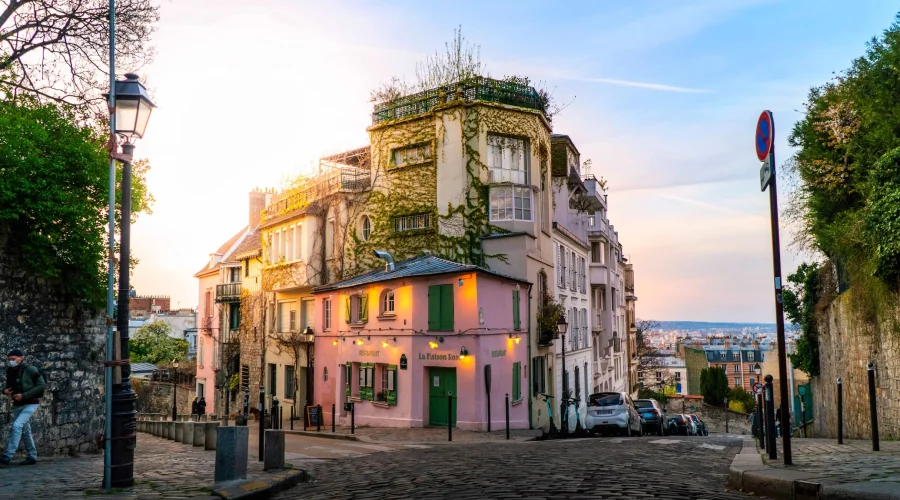
Le Marais: A Living Museum of Architecture
Le Marais, an enchanting district in the heart of Paris, is a testament to the city’s rich architectural history. Often described as a “living museum of architecture,” this neighborhood is a fascinating blend of centuries-old buildings, each with its own story to tell. From medieval marvels to elegant Renaissance townhouses and grand 17th-century mansions, Le Marais embodies the evolution of Parisian architecture. Wandering through the winding streets of Le Marais, one can witness the transition of architectural styles over the ages. The medieval period is evident in the timber-framed structures with their distinctive half-timbered facades. These buildings harken back to the city’s early days and offer a glimpse into its medieval past.
Moving forward in time, the Renaissance brought about the construction of elegant townhouses characterized by their intricate stonework and ornate details. Many of these townhouses have been preserved and now house museums, galleries, or upscale boutiques. The Hôtel de Sully, for instance, is a splendid example of Renaissance architecture and is open to the public, allowing visitors to admire its stunning courtyard and architecture.
Le Marais stands as a living museum of architecture, where the past and present harmoniously coexist. Its streets tell the story of Paris through the ages, and as you explore this captivating neighborhood, you’ll discover that history is very much alive in the heart of the city.
Historical Landmarks in Parisian Cinema
Paris, often referred to as the “City of Light,” is not only a hub of culture and art but also a central character in the world of cinema. Its iconic landmarks and picturesque streets have provided the backdrop for countless film classics, making the city itself a historical landmark in the world of cinema.
- The Eiffel Tower: Standing tall and resplendent along the banks of the Seine, the Eiffel Tower has graced numerous films over the years. Its iconic silhouette and breathtaking views of the city have been featured in romantic comedies, action flicks, and dramas alike. From Audrey Hepburn’s dance in “Funny Face” to Tom Cruise’s daring climb in “Mission: Impossible,” the Eiffel Tower has played a starring role in many cinematic adventures.
- Montmartre: The charming neighborhood of Montmartre has inspired countless filmmakers. Its picturesque streets, the iconic Basilica of the Sacré-Cœur, and the Place du Tertre, where artists display their work, have featured in films like “Amélie” and “Moulin Rouge!” Montmartre’s bohemian spirit and artistic legacy continue to captivate both filmmakers and audiences.
- Louvre Museum: The Louvre, one of the world’s most famous art museums, has been the setting for numerous cinematic moments. In “The Da Vinci Code,” Tom Hanks unravels a mystery within the Louvre’s hallowed halls, while the museum’s glass pyramid in the courtyard has become an emblematic image featured in films like “The Devil Wears Prada.”
- Notre-Dame Cathedral: This iconic cathedral along the Seine’s banks has graced the screen in countless films, with its Gothic architecture and historical significance serving as a backdrop for various genres. Whether in Disney’s animated classic “The Hunchback of Notre Dame” or the classic adaptation of Victor Hugo’s novel, the cathedral’s striking presence adds depth and drama to these stories.
- Seine River: The winding Seine River and its picturesque bridges have played a significant role in the city’s cinematic history. In movies like “Before Sunset,” the river becomes a romantic setting for the characters’ interactions. The bridges, especially the Pont Neuf, have featured in countless love stories set in Paris.
- The Champs-Élysées: This iconic avenue, lined with theaters and high-end boutiques, has been showcased in films like “The Devil Wears Prada” and “The Artist.” It represents the epitome of Parisian elegance and style.
- Versailles: The opulent Palace of Versailles, located just outside Paris, has often been the setting for period dramas and historical epics. Films like “Marie Antoinette” capture the grandeur and luxury of the palace and its gardens.
- The Latin Quarter: With its historic universities and vibrant atmosphere, the Latin Quarter is a popular location for films set in the academic world. In movies like “Midnight in Paris,” it captures the intellectual and artistic spirit of the city.
Parisian cinema is not just about telling stories; it’s about capturing the essence of a city that has inspired artists for generations. These historical landmarks in Paris have not only served as backdrops but have become integral characters in the narratives, making Paris an enduring star in the world of cinema.
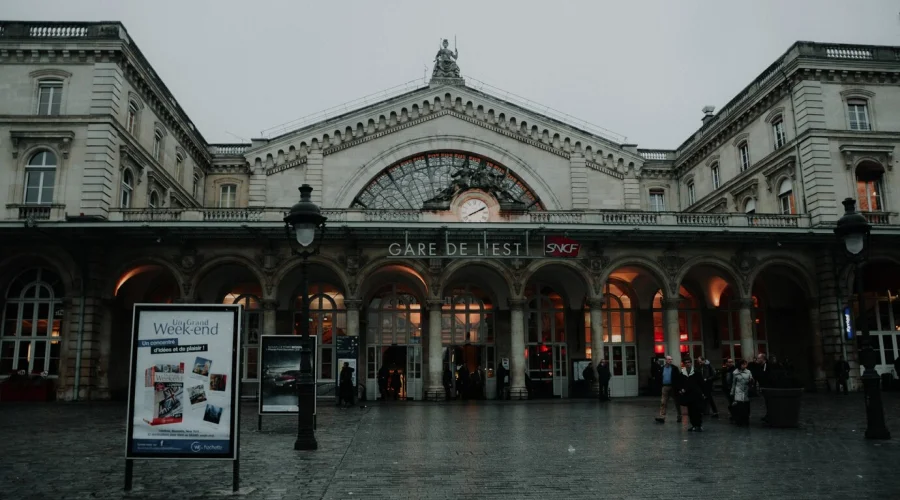
La Cinémathèque Française and Cinematic Education
The Cinémathèque Française, located in the heart of Paris, is a sanctuary for film enthusiasts and a beacon of film education that has played a crucial role in the preservation and promotion of the seventh art. Founded in 1936 by film critic and theorist Henri Langlois, this institution is a pillar of film culture not only in France but worldwide.
One of the most significant highlights of the Cinémathèque Française is its role in the preservation of films and historical film material. During its early years, Langlois and his team rescued and preserved countless movies that would have otherwise been lost forever. The importance of this preservation work cannot be underestimated, as cinema is an essential part of humanity’s cultural heritage.
In addition to its preservation efforts, the Cinémathèque has been a center for the exhibition of classic and contemporary films, allowing the public to experience the richness and diversity of cinema throughout history. Retrospectives of directors, thematic cycles, and screenings of rare films have been an endless source of knowledge and cinematic appreciation.
The Cinémathèque Française is a beacon of film education that has played a crucial role in the preservation and promotion of film. Through its preservation efforts, exhibitions, educational programs, and research resources, it has contributed significantly to the understanding and appreciation of the seventh art. Its legacy endures as a testament to the importance of film in culture and education.
Film Festivals and Events
Paris, often referred to as the “City of Light,” is not only a global center for art, culture, and fashion but also a thriving hub for film festivals and events. The city’s rich cinematic history and its role in shaping the world of cinema make it a perfect setting for celebrating the art of film.
The diversity and richness of film festivals and events in Paris cater to a wide range of cinematic tastes and interests. Whether you are a fan of classic films, cutting-edge independent cinema, or international productions, there is something for everyone. Let’s explore some of the most notable film festivals and events that grace the streets of Paris.
- Cannes Film Festival in Paris: While the Cannes Film Festival is celebrated on the French Riviera, the Cannes Film Festival in Paris brings the glamour and prestige of this renowned event to the capital. It features a selection of the festival’s films, allowing Parisian audiences to experience the best of international cinema.
- Paris International Film Festival: This festival showcases a diverse range of independent and international films. It provides a platform for emerging filmmakers to present their work to a discerning audience and industry professionals.
- Champs-Élysées Film Festival: This festival is dedicated to American and French independent cinema. It offers a curated selection of films, from Hollywood blockbusters to indie gems, giving cinephiles the chance to explore the cinematic creations of both countries.
- Cinéma en Plein Air at Parc de la Villette: During the summer months, Parc de la Villette transforms into an open-air cinema. This annual event offers a unique experience, where Parisians and tourists gather under the stars to enjoy a selection of classic and contemporary films projected on a giant screen.
- Cinéma du Réel – International Documentary Film Festival: This festival focuses on the art of documentary filmmaking. It brings together filmmakers, industry professionals, and documentary enthusiasts to explore the power of non-fiction storytelling.
- Cinéma en Liberté: Organized by the Forum des Images, this festival offers free outdoor screenings across various neighborhoods in Paris, making cinema accessible to all. It celebrates the joy of communal film viewing.
- Festival Silhouette: This short film festival takes place in Parc de la Butte du Chapeau Rouge and features a wide range of short films, from animation to documentaries. It provides a platform for emerging filmmakers to present their creative and innovative works.
- L’Étrange Festival: For lovers of the bizarre, fantastic, and offbeat, L’Étrange Festival presents a selection of unique and unconventional films. It celebrates cult cinema and experimental storytelling.
- Paris International Fantastic Film Festival: This event caters to horror, science fiction, and fantasy film enthusiasts. It offers a selection of thrilling and imaginative films that push the boundaries of the genre.
These film festivals and events in Paris not only offer a feast for film enthusiasts but also provide opportunities for networking, industry discussions, and the discovery of emerging talent. The city’s historic cinemas, iconic landmarks, and vibrant neighborhoods create the perfect backdrop for celebrating the diverse and dynamic world of cinema. Paris truly remains a cinematic wonderland for both filmmakers and film lovers.
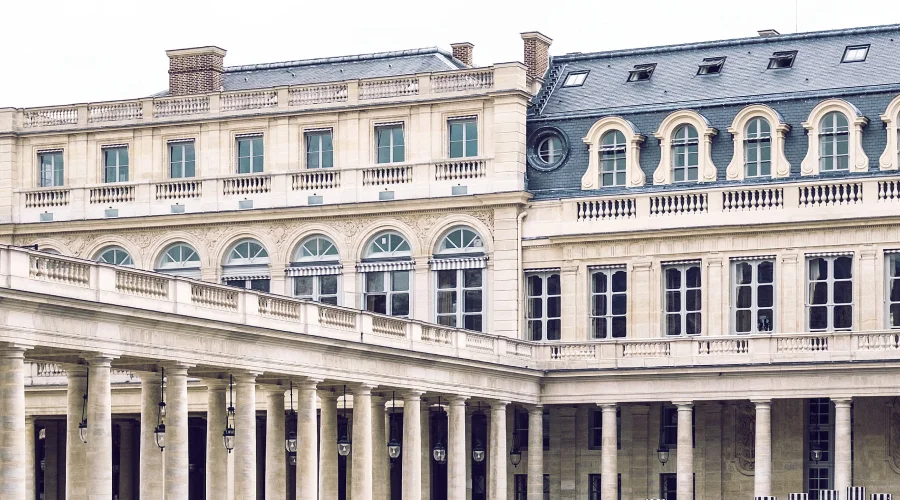
Conclusion
In a city as rich and diverse as Paris, the worlds of art, architecture, and cinema seamlessly blend into a captivating tapestry. From the brushstrokes of the Louvre’s masterpieces to the enchanting streets of Montmartre, from the architectural grandeur of Le Marais to the cinematic allure of its landmarks, Paris is a cultural kaleidoscope that continues to inspire and enthrall. Its impact on the global cultural landscape is immeasurable, making it a city where art, architecture, and cinema harmoniously converge, inviting all to explore and be inspired. Paris remains, as ever, a city of boundless creativity and cultural significance.
Paris’s appeal as a cultural and artistic hub is timeless. Its art, architecture, and cinema are a reflection of its rich history and its continued innovation and creativity. From its historic Louvre to its modern Fondation Louis Vuitton, from its Gothic cathedrals to its contemporary skyscrapers, from its role in the birth of cinema to its continued contributions to the art form, Paris is an enduring source of inspiration for artists and creators from around the world. It remains, as ever, a city where the worlds of art, architecture, and cinema converge in a harmonious celebration of culture.
